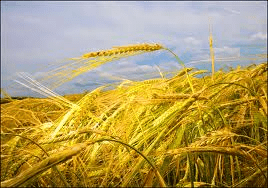There is no doubt that the spring drought in some regions increased the build-up of fusarium head blight inoculum. Pre-harvest rainfall, as well as rain and humidity at flowering, will greatly add to that risk.
While that doesn’t mean grain mycotoxins are inevitable, it sets alarm bells ringing, warns Paul Nicholson of the John Innes Centre.
By now, local rainfall patterns will have determined the likelihood of contamination with DON (deoxynivalenol), NIV (nivalenol), T-2 and HT-2 at harvest. All from the trichothecene group, the first two are produced mainly by Fusarium culmorum and F graminearum, and the latter two by F langsethiae and F poae.
"Without widespread and costly testing, we won’t be certain that crops are free from mycotoxins at the point of sale. But HGCA’s improved risk assessment, accompanying every load of farm-assured grain, takes the guesswork out of risk analysis," says Dr Nicholson. Millers and other end users interpret the information about previous crop, variety, T3 fungicide use and conditions prior to harvest to make decisions on whether or not to test.
"The latest risk assessment forms take account of the risk right up to harvest, so growers and end users can better plan their loss prevention strategy and testing regime. This saves time and money."
Nevertheless, an on-going £1.4m DEFRA LINK project, with HGCA funding of £210,000, is investigating several avenues that could reduce the mycotoxin risk. With poor genetic resistance in current UK wheat varieties, an integrated approach including cultivations and a well-timed T3 fungicide application is likely to be the most appropriate, he suggests.
The main focus remains genetic, however. Information from a previous HGCA-funded study indicates that the susceptibility of UK wheats is associated with them containing the Rht2 semi-dwarfing gene that largely determines crop height, says Dr Nicholson.
However, it is highly likely that much of the problem is due not to Rht2 itself, but to a gene positioned close to it on the chromosome – he believes within 10 genes each side of it – that confers pathogen sensitivity.
"What we need to do is to break the link between the Rht2 gene and the fusarium susceptibility gene so that, instead of selecting plants in breeding lines on the basis of height, breeders can use a marker to help them spot and avoid including progeny with the fusarium susceptibility gene in the selected material."
It’s not going to be easy, since at least 20 genes must be characterised, and although the DNA sequence of wheat genome is known, we don’t know the order of the genes, he adds. Fortunately, scientists can extrapolate by using other cereals for which we have both the DNA sequence and gene order, such as sorghum and rice.
"Within a decade or so, we can expect fusarium-resistant wheat and barley varieties," he says. There is germplasm with fusarium resistance originating from varieties such as Spark and Soissons, and in barley from Westminster and Optic.
New sources of fusarium resistance are constantly being sought. Type 1 resistance, which prevents initial infection, is most desirable, but type 2, which offers resistance to spread within the plant, is also useful and easier to work with, explains Dr Nicholson.
Another angle has been to analyse interactions between fungicides and host resistance. Fera’s trials are comparing untreated and treated resistant breeding lines to see if fungicides such as Brutus (epoxiconazole and metconazole) can further limit toxin production in plants with some level of resistance.
HGCA PERSPECTIVE:
• Fusarium mycotoxins threaten grain safety for food and feed markets
• Developing integrated approach to risk reduction
• Identifying genetic basis of resistance and gene mapping to allow plant breeders to improve resistance of UK varieties
• Protecting harvest value with appropriate fungicide applications to benefit growers and supply chain
Crops perspective:
Looking for new sources of genetic resistance to fusarium infection and spread and enhancing the limited resistance we have in current varieties are proving to be challenging. But this project should ensure the sustainability of cereal grain production while reducing input costs and potential losses. Further information including the HGCA mycotoxin risk assessment available on www.hgca.com/mycotoxins
SUMMARY [panel]:
Project no. 3453: Integrated strategy to prevent mycotoxin risks; John Innes Centre, Fera, NIAB, RAGT Seeds, Syngenta Seeds, Sejet Plant breeding, KWS UK, SW Seed, Secobra, James Hutton Institute, BASF, Premier Foods, MAGB, nabim, with funding from BBSRC, HGCA, RERAD and DEFRA under a Sustainable Arable LINK programme, from October 2009 to October 2013.


Deprecated: strpos(): Passing null to parameter #1 ($haystack) of type string is deprecated in /home/agriviek8Qv/agriviet.net/public_html/wp-includes/comment-template.php on line 2522